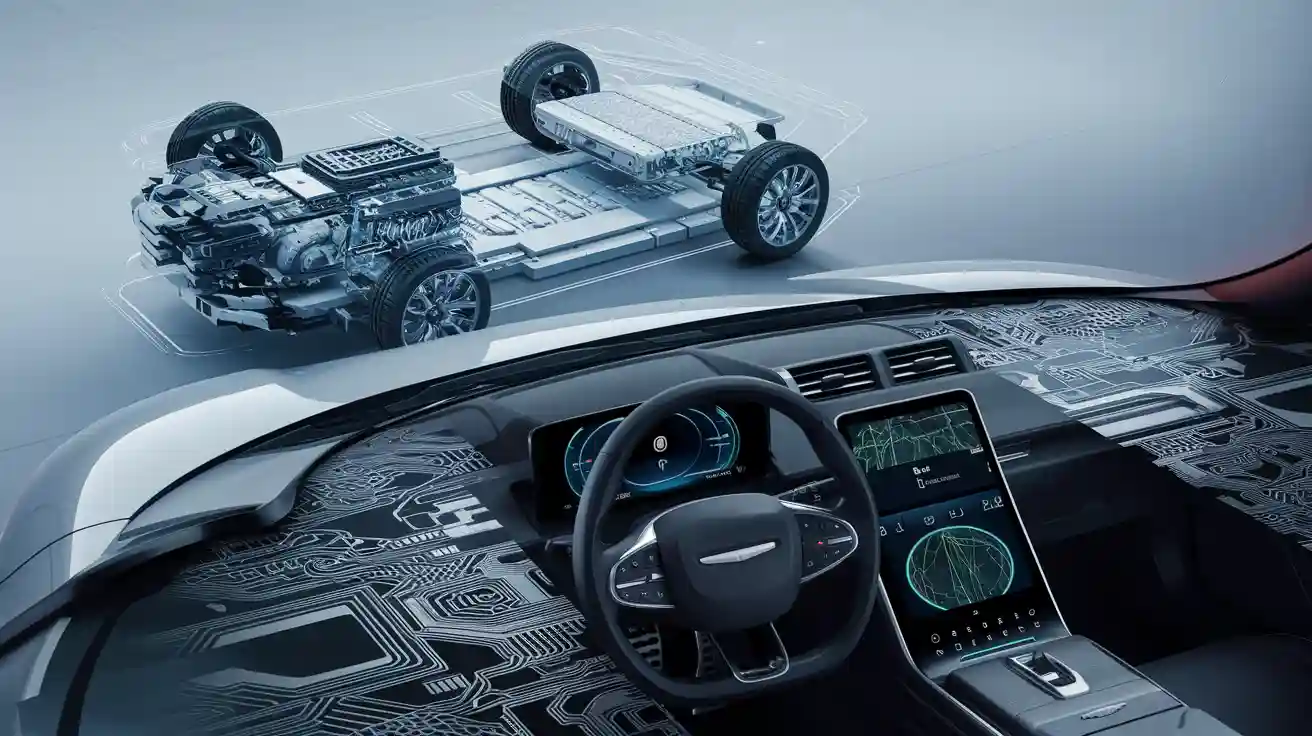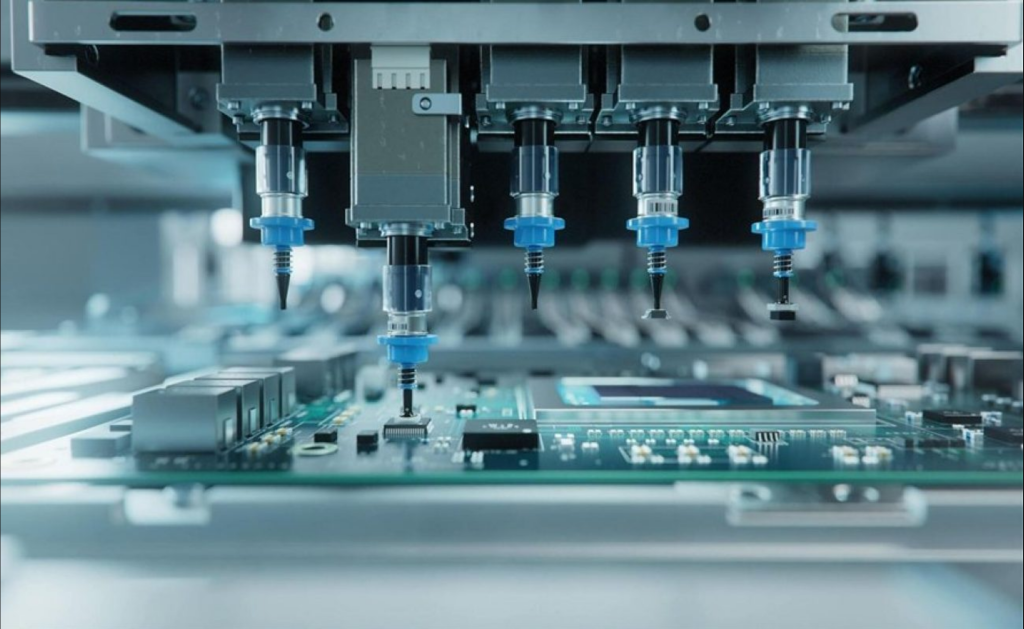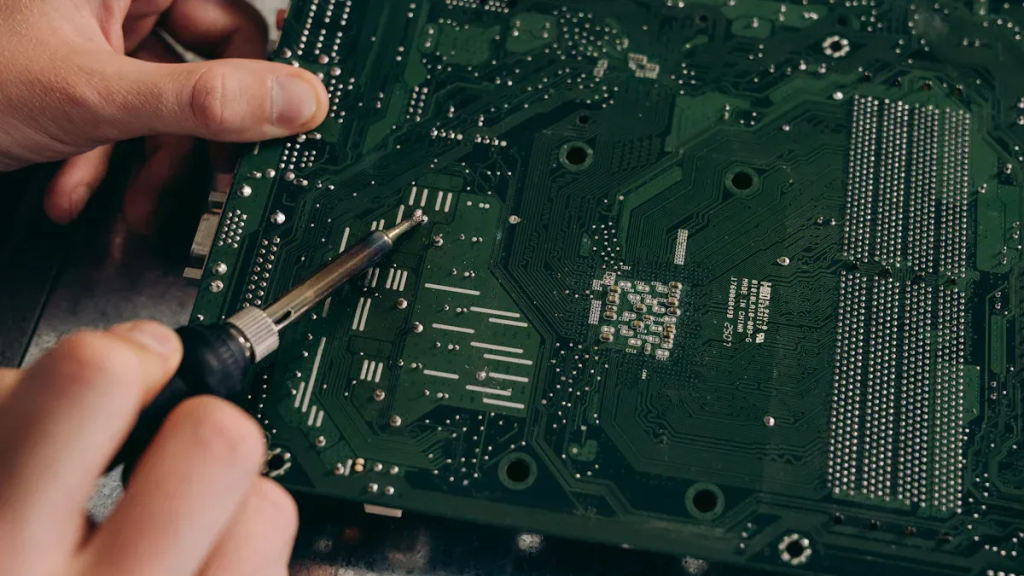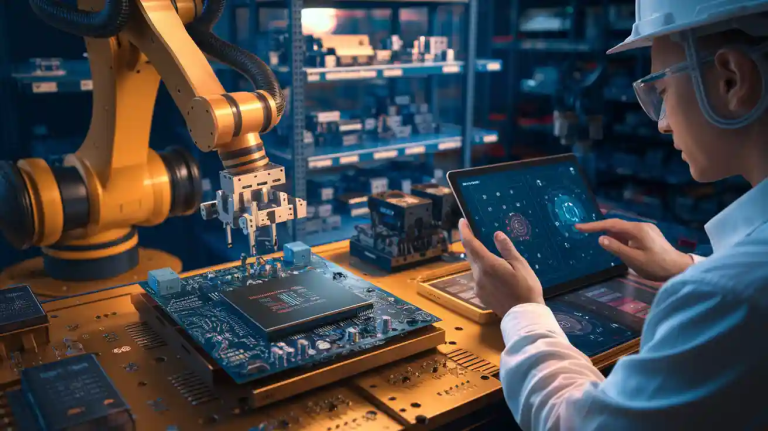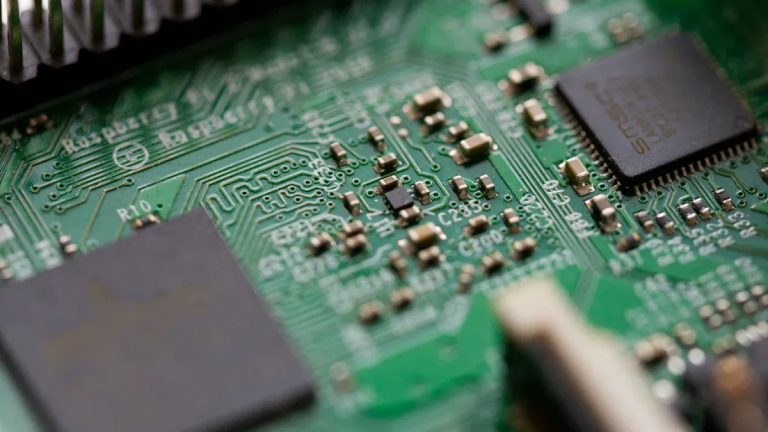In today’s automotive industry, the role of automotive PCBs cannot be overstated. These intricate circuit boards serve as the backbone of modern vehicles, powering essential systems and ensuring seamless functionality. You rely on them for critical safety features like airbags and anti-lock braking systems, which protect lives during emergencies. They also enable advanced infotainment systems, offering touchscreens and connectivity options that enhance your driving experience. Furthermore, automotive PCBs play a vital role in autonomous driving technologies, integrating sensors and AI to make vehicles smarter and safer. Their contribution to innovation and reliability makes them indispensable in the evolution of transportation.
Key Takeaways
- Automotive PCBs are important for safety, running systems like airbags and brakes to save lives in emergencies.
- These boards improve how vehicles work, helping with entertainment and connection features for a better driving experience.
- Advanced PCBs make self-driving possible by using sensors and smart technology for safer cars.
- Companies follow strict rules like ISO 26262 to make sure automotive PCBs are safe and work well in tough conditions.
- Using good-quality PCBs can make cars more efficient, use less power, and support the need for electric and smart vehicles.
What Are Automotive PCBs?
Definition and Overview
Automotive PCBs, or printed circuit boards, are the foundation of modern automotive electronics. These specialized boards connect and support electronic components, enabling seamless communication between various systems in vehicles. Unlike standard PCBs, automotive PCBs are designed to withstand harsh conditions such as extreme temperatures, vibrations, and humidity. They are essential for critical systems like airbag controls, anti-lock braking systems (ABS), and advanced driver assistance systems (ADAS). Manufacturers adhere to strict standards, including IPC-A-600G for design and ISO 26262 for functional safety, ensuring reliability and safety in automotive applications.
Note: Automotive PCBs often use thicker copper foils and durable materials to handle electrical vibrations and high currents, making them more robust than traditional printed circuit boards.
Importance in Vehicles
Automotive PCBs play a pivotal role in enhancing the functionality and safety of vehicles. They control essential systems such as engine management, airbag sensors, and ABS, ensuring optimal performance and safety. These boards also power infotainment systems, GPS navigation, and connectivity features, providing a seamless driving experience. Additionally, they manage communication networks within vehicles, ensuring that multiple electronic systems operate without interference. By integrating advanced technologies, automotive PCBs contribute to the development of smarter and safer vehicles.
Here are some key standards that ensure the quality and safety of automotive PCBs:
- IPC-A-600G: Sets design and visual standards for PCBs.
- ISO 26262: Focuses on functional safety in automotive systems.
- UL 94: Evaluates the flammability of PCB materials.
- AEC-Q100/AEC-Q200: Ensures reliability and environmental resilience.
Key Features of Automotive PCBs
Automotive PCBs possess unique features that make them suitable for demanding automotive applications. These include:
- Durability: Designed to withstand extreme environmental conditions, including high temperatures, humidity, and mechanical stress.
- High Reliability: Incorporates rigorous testing protocols such as thermal cycling, vibration testing, and thermal shock to ensure consistent performance.
- Material Selection: Uses eco-friendly and sustainable materials that comply with regulations like RoHS, reducing environmental impact.
- Traceability: Allows manufacturers to track components throughout their lifecycle, ensuring quality control and accountability.
| Application/Standard | Description |
|---|---|
| Airbag Controls | Critical for deploying airbags during collisions. |
| Anti-lock Brake Systems | Improves braking response and vehicle control. |
| ADAS | Processes data for safety alerts to reduce accidents. |
| IPC-A-600G | Sets standards for PCB design and visual aspects. |
| ISO 26262 | Ensures functional safety across the PCB lifecycle. |
| UL 94 | Evaluates flammability of PCB materials. |
| AEC-Q100/AEC-Q200 | Focuses on reliability and environmental resilience. |
These features make automotive PCBs indispensable in modern vehicles, supporting advanced technologies and ensuring safety and efficiency.
Types of Automotive PCBs
Rigid PCBs
Rigid PCBs are the most commonly used type in automotive applications. These boards are made from solid, inflexible materials, ensuring durability and reliability under harsh conditions. You’ll find them in critical systems like safety controls, powertrains, and engine management units. Single-layer rigid PCBs are cost-effective and ideal for simpler systems, while double-layer and multi-layer designs offer enhanced performance for complex applications.
To ensure reliability, rigid PCBs undergo rigorous testing, including thermal cycling and vibration tests. These tests prevent defects like Conductive Anodic Filament (CAF), which can cause short circuits. The safety system segment, including airbags and ABS, heavily relies on rigid PCBs due to their ability to process sensor data efficiently.
Tip: Rigid PCBs are favored in electric and hybrid vehicles for their ability to handle high currents and maintain performance under extreme temperatures.
Flexible PCBs
Flexible PCBs, as the name suggests, are designed to bend and twist, making them ideal for compact and irregularly shaped spaces in vehicles. They are commonly used in infotainment systems, touchscreens, and lighting applications. Their lightweight and space-efficient design contribute to reducing the overall weight of vehicles, which is crucial for improving fuel efficiency.
However, flexible PCBs come with challenges. Their manufacturing process is more complex, and they tend to be costlier than rigid PCBs. Despite these limitations, their advantages, such as dynamic flexibility and durability, make them indispensable in modern automotive designs.
| Advantages | Limitations |
|---|---|
| Space Efficiency | Higher Cost |
| Weight Reduction | Complex Manufacturing |
| Durability | Design Challenges |
| Dynamic Flexibility |
High-Density Interconnect (HDI) PCBs
HDI PCBs represent the cutting edge of automotive electronics. These boards are designed to integrate sophisticated components in a compact space, making them essential for advanced systems like ADAS and infotainment. Their ability to improve wiring quality and reduce the size and weight of electronic solutions makes them a preferred choice in modern vehicles.
HDI PCBs are particularly reliable in complex automotive designs. They support high-speed data transmission and ensure seamless communication between components. This reliability is critical for systems where performance cannot be compromised, such as autonomous driving technologies.
Note: HDI PCBs are a cornerstone of innovation in the automotive industry, enabling the development of smarter and more efficient vehicles.
Metal-Core PCBs
Metal-core PCBs (MCPCBs) are a specialized type of printed circuit board designed to handle high thermal loads. Unlike traditional PCBs, these boards incorporate a metal base layer, typically aluminum, which acts as a heatsink. This unique construction allows them to dissipate heat efficiently, making them indispensable in automotive systems where thermal management is critical.
Did you know? The aluminum base in metal-core PCBs not only improves heat dissipation but also enhances electrical insulation and mechanical stability.
Key Features of Metal-Core PCBs
- Superior Heat Dissipation: The metal core efficiently transfers heat away from sensitive components, preventing overheating and ensuring consistent performance.
- Enhanced Durability: These boards withstand harsh automotive environments, including high temperatures and vibrations.
- Compact Design: By reducing the need for additional cooling mechanisms, MCPCBs save space and contribute to lightweight vehicle designs.
Applications in Automotive Systems
You’ll find metal-core PCBs in critical automotive systems where heat management is essential. For instance, they play a pivotal role in Anti-lock Braking Systems (ABS). These systems require reliable thermal conductivity to maintain performance during intense braking scenarios. Additionally, MCPCBs are used in LED lighting systems, ensuring that high-power LEDs operate efficiently without overheating.
| Application | Role of Metal-Core PCBs |
|---|---|
| Anti-lock Braking Systems (ABS) | Provides thermal stability and electrical insulation. |
| LED Lighting Systems | Ensures efficient heat dissipation for high-power LEDs. |
By integrating metal-core PCBs into your vehicle’s design, manufacturers achieve a balance between performance, safety, and efficiency. Their ability to handle high currents and extreme conditions makes them a cornerstone of modern automotive electronics.
Tip: When evaluating automotive PCBs, consider the thermal management capabilities of metal-core designs. They are essential for systems that demand high reliability under challenging conditions.
Applications of Automotive PCBs
Automotive PCBs are integral to various automotive applications, enabling advanced functionalities and ensuring safety, efficiency, and connectivity in vehicles. Below, we explore their role in key systems.
Safety Systems
Airbags and Anti-lock Braking Systems (ABS)
Automotive PCBs are the backbone of safety-critical PCBs in airbags and anti-lock braking systems. These systems rely on PCBs to process sensor data and execute rapid responses during emergencies. For instance:
- Airbags deploy instantly during collisions by analyzing impact data.
- Anti-lock braking systems enhance braking response, preventing wheel lock-up and maintaining vehicle control.
- Electronic stability control monitors steering angles and wheel speed, improving stability during sharp turns or slippery conditions.
These applications highlight the critical role of PCBs in ensuring safety and reducing accident risks.
Advanced Driver Assistance Systems (ADAS)
Advanced driver assistance systems rely heavily on automotive PCBs to process data from cameras, sensors, and radar. These systems provide real-time safety alerts, such as lane departure warnings and collision avoidance. By integrating advanced PCBs, ADAS reduces accidents and enhances driving confidence. As vehicles become smarter, the demand for reliable PCBs in ADAS continues to grow.
Infotainment and Connectivity
Touchscreens and Displays
Modern vehicles feature sophisticated infotainment systems powered by automotive PCBs. These systems support touchscreens, digital displays, and seamless smartphone integration. In 2023, infotainment components accounted for 30.7% of the automotive PCB market, driven by consumer demand for enhanced user experiences. High-performance PCBs ensure smooth operation, enabling features like voice-controlled interfaces and real-time navigation.
In-car Wi-Fi and Bluetooth
Connectivity is a cornerstone of modern automotive applications. Automotive PCBs enable in-car Wi-Fi and Bluetooth, allowing you to stay connected on the go. These systems support streaming, hands-free calling, and device synchronization, enhancing convenience and entertainment. The rising demand for connected vehicles underscores the importance of PCBs in delivering reliable connectivity solutions.
Powertrain and Engine Management
Electric Vehicle (EV) Battery Management
Electric vehicles rely on advanced PCBs for battery management systems. These systems monitor battery health, optimize charging, and ensure efficient energy use. High-power copper-plated PCBs are commonly used in power converters and digital displays, supporting the growing EV market.
Engine Control Units (ECUs)
Engine control units depend on PCBs to manage fuel injection, ignition timing, and power output. Flexible PCBs are often used in engine timing systems, while HDI PCBs support advanced driver-assistance features. These applications demonstrate the versatility of PCBs in optimizing engine performance and efficiency.
| PCB Type | Applications |
|---|---|
| High-power copper-plated | Power converters, digital displays, braking systems |
| Flexible PCBs | Engine timing systems, automotive lighting |
| HDI PCBs | Advanced driver-assistance systems (ADAS) |
| LED PCBs | Automotive lighting, digital displays |
Automotive PCBs play a pivotal role in these systems, ensuring reliability, safety, and performance across various automotive applications.
Autonomous Driving
Sensors and Cameras
Autonomous driving relies heavily on advanced sensors and cameras to navigate complex environments. These components act as the vehicle’s “eyes,” capturing real-time data about the surroundings. Sensors, such as LiDAR and radar, detect objects, measure distances, and monitor road conditions. Cameras provide visual input, enabling the vehicle to recognize traffic signs, lane markings, and pedestrians. Together, they create a comprehensive understanding of the driving environment.
Automotive PCBs play a crucial role in supporting these systems. They provide the necessary circuitry to process vast amounts of data generated by sensors and cameras. Multi-layer and flexible PCBs are particularly valuable here, as they accommodate the intricate and high-density circuitry required for autonomous driving technology. The growing demand for these PCBs reflects the increasing complexity of self-driving systems.
Did you know? The autonomous vehicles segment is driving significant growth in the automotive PCB market. This surge is fueled by advancements in self-driving technology and increased investments in autonomous vehicle development.
AI and Machine Learning Integration
Artificial intelligence (AI) and machine learning are the brains behind autonomous vehicles. These technologies analyze data from sensors and cameras, enabling the vehicle to make decisions in real time. For example, AI algorithms can predict the behavior of other road users, while machine learning models improve vehicle performance by learning from past experiences.
PCBs are essential for integrating AI processors and machine learning modules into autonomous vehicles. They ensure seamless communication between components, supporting high-speed data transmission and complex computations. Major automotive manufacturers and technology companies are investing heavily in these systems to achieve fully autonomous driving capabilities.
Tip: The use of advanced PCBs in AI integration ensures that autonomous vehicles can process data efficiently, enhancing safety and reliability on the road.
The combination of sensors, cameras, and AI-powered systems highlights the transformative potential of autonomous driving technology. With the support of cutting-edge PCBs, these vehicles are becoming smarter, safer, and more efficient.
Benefits of Automotive PCBs
Enhanced Efficiency
Automotive PCBs significantly improve the efficiency of modern vehicles. By optimizing electronic systems, they enhance fuel efficiency and reduce power consumption. For instance, advanced PCB designs ensure that energy is distributed effectively across various components, minimizing waste and improving overall performance. This is particularly crucial in electric and hybrid vehicles, where energy efficiency directly impacts range and battery life.
| Benefit | Description |
|---|---|
| Fuel Efficiency | Optimized designs reduce energy waste, improving mileage. |
| Reduced Power Consumption | Advanced technologies lower energy usage, enhancing sustainability. |
| Low Electromagnetic Interference | Minimizes interference, ensuring reliable system performance. |
Tip: Choosing high-quality PCBs with advanced thermal management features can further boost energy efficiency in your vehicle.
Improved Safety and Reliability
Automotive PCBs play a critical role in ensuring vehicle safety and system reliability. They support essential safety features like airbags, anti-lock braking systems, and electronic stability control. These systems rely on PCBs to process data quickly and accurately, enabling real-time responses during emergencies. Additionally, rigorous standards like ISO 26262 and UL 94 ensure that PCBs meet stringent safety and reliability benchmarks.
- Endurance under Stress: Automotive PCBs withstand extreme temperatures and vibrations.
- Predicting Component Lifespan: Advanced testing methods estimate the longevity of components.
- Failure Mode Analysis: Identifies potential failure points to improve design.
- Quality Assurance: Ensures only reliable PCBs are used in vehicles.
| Standard | Description |
|---|---|
| ISO 26262 | Focuses on functional safety throughout the lifecycle of automotive systems. |
| UL 94 | Evaluates flammability of materials used in PCBs to meet fire safety standards. |
| AEC-Q100/AEC-Q200 | Sets benchmarks for reliability and environmental resilience of automotive components. |
Note: Adhering to ISO 26262 ensures that your vehicle’s PCBs meet the highest functional safety standards, reducing the risk of system failures.
Support for Advanced Automotive Applications
Modern vehicles rely on PCBs to power advanced applications that enhance functionality and convenience. From infotainment systems and GPS navigation to ADAS and electric powertrains, PCBs enable seamless integration of cutting-edge technologies. For example, in autonomous vehicles, PCBs process data from sensors and cameras, supporting real-time decision-making.
- Airbags: Analyze sensor data for timely deployment during collisions.
- ADAS: Process data to trigger safety alerts and reduce accidents.
- Anti-Lock Braking Systems: Improve braking response and vehicle control.
- Vehicle Communication Networks: Manage communication within the vehicle.
- Fuel Injection Control: Optimize engine efficiency and power output.
The growing demand for connected and electric vehicles highlights the importance of PCBs in supporting these advanced systems. By integrating innovative PCB designs, manufacturers can deliver smarter, safer, and more efficient vehicles.
Challenges and Solutions
Manufacturing Complexities
Producing automotive PCBs involves overcoming several manufacturing challenges. The rapid pace of technological advancements demands that you adopt cutting-edge techniques to stay competitive. Additionally, automotive PCBs must meet stringent quality standards, such as ISO 26262, to ensure safety and reliability. These requirements often lead to increased reliance on automated assembly processes.
| Challenge | Description |
|---|---|
| Technological Innovations | Keeping up with rapid advancements in PCB manufacturing technology. |
| High Reliability | Ensuring PCBs endure extreme conditions like temperature fluctuations and vibrations. |
| Meeting Automotive PCB Standards | Adhering to strict quality standards to maintain safety and performance. |
| Lightweight and Miniaturization | Designing compact PCBs to reduce vehicle weight while maintaining functionality. |
You also face the challenge of miniaturization, which requires meticulous inspections and advanced manufacturing techniques. This complexity increases development cycles but contributes to fuel efficiency by reducing the size and weight of components.
Tip: Investing in automated testing and inspection systems can help you streamline production while maintaining high-quality standards.
Environmental and Thermal Management
Automotive PCBs operate in harsh environments, exposing them to temperature fluctuations, vibrations, and shocks. These conditions can compromise performance and structural integrity if not managed effectively. Selecting materials with low moisture absorption and high thermal conductivity is crucial to ensure durability.
- Key Environmental Challenges:
- Temperature extremes can cause material degradation.
- Vibrations and shocks may lead to mechanical failures.
- Moisture absorption can reduce electrical performance.
To address these issues, you can implement effective thermal management strategies. For example:
- Lower power dissipation by using energy-efficient components.
- Improve heat transfer with thermal vias, heat sinks, or external cooling systems.
- Constrain operating conditions through software-controlled limits to prevent overheating.
Note: Proper thermal management not only extends the lifespan of PCBs but also enhances the reliability of critical automotive systems.
Cost and Scalability Concerns
The cost of developing and scaling automotive PCBs presents significant challenges. High initial development costs and complex manufacturing processes require substantial investment in expertise and equipment. Additionally, supply chain disruptions can impact the availability of raw materials, further complicating production.
| Cost Factor | Impact |
|---|---|
| Initial Development Costs | High costs hinder market entry for new manufacturers. |
| Manufacturing Processes | Complex processes demand significant investment in advanced tools. |
| Material Expenses | Advanced materials increase production costs, limiting scalability. |
Supply chain issues also affect production schedules and quality. Sourcing critical materials like copper and specialized laminates can delay manufacturing timelines, impacting your ability to meet market demands.
Did you know? Streamlining your supply chain and investing in scalable manufacturing technologies can help you reduce costs and improve production efficiency.
By addressing these challenges, you can ensure that your automotive PCBs meet industry standards while remaining cost-effective and scalable.
Future Trends in Automotive PCBs
AR Circuit Boards
Augmented Reality (AR) circuit boards are revolutionizing automotive technology by enhancing how you interact with your vehicle. These PCBs power advanced features like heads-up displays (HUD), which project critical driving information directly onto the windshield. This allows you to keep your eyes on the road while accessing navigation, speed, and safety alerts. AR circuit boards also enable auditory notifications and haptic feedback, creating a multi-sensory driving experience that improves safety and convenience.
Research shows that AR circuit boards are pivotal in transforming vehicle interactions. By integrating these boards, manufacturers can deliver systems that process real-time data from sensors and cameras, ensuring seamless functionality. As AR technology evolves, you can expect even more immersive and intuitive automotive systems.
Smart Car Integration
The rise of smart cars has placed automotive PCBs at the forefront of innovation. These PCBs control essential systems like engine management, navigation, and safety features, ensuring your vehicle operates efficiently. The shift toward connected vehicles has also increased the demand for PCBs that support advanced communication networks, enabling features like real-time traffic updates and remote diagnostics.
Smart car integration is driven by regulatory requirements for enhanced safety and emissions standards. For example, PCBs play a crucial role in Advanced Driver Assistance Systems (ADAS) and Engine Control Units (ECUs), which optimize performance and reduce environmental impact. As the automotive industry embraces smart solutions, PCBs will continue to be indispensable in meeting these evolving demands.
Advancements in Materials and Miniaturization
Recent advancements in materials and miniaturization are reshaping the automotive PCB landscape. New substrates capable of withstanding higher temperatures have improved the durability of PCBs in harsh environments. Metal cores enhance heat dissipation, ensuring reliable performance in high-power applications. Selective plating techniques allow for thicker copper traces, increasing current capacity without compromising size.
| Advancement Type | Description |
|---|---|
| New Board Substrates | Development of substrates that can endure extreme temperatures. |
| Metal Cores | Improved heat transfer for high-power applications. |
| Selective Plating | Thicker copper traces for enhanced current capacity. |
| Higher Density Interconnect (HDI) | Compact designs for better performance in modern vehicles. |
Miniaturization has also enabled the development of compact, lightweight PCBs that reduce vehicle weight and improve fuel efficiency. These innovations are critical for electric and autonomous vehicles, where space and energy efficiency are paramount. As these technologies advance, you can look forward to smarter, more efficient automotive systems.
Automotive PCBs have revolutionized how vehicles operate, driving advancements in innovation, safety, and performance. By adhering to standards like ISO 26262, they undergo rigorous safety analyses, reducing risks and enhancing reliability. Their evolution supports cutting-edge technologies in autonomous and electric models, meeting the growing demand for advanced systems. Multi-layer designs and material innovations ensure these PCBs remain pivotal in modern automotive applications. As the industry progresses, you can expect automotive PCBs to play an even greater role in shaping smarter, safer, and more efficient vehicles.
FAQ
What is an automotive PCB, and why is it essential in vehicles?
An automotive PCB is a printed circuit board designed for vehicle electronics. It connects and supports components in systems like safety controls, infotainment, and autonomous driving. Its durability and reliability make it indispensable for modern automotive applications.
How do automotive PCBs handle extreme conditions?
Manufacturers use durable materials and advanced designs to ensure automotive PCBs withstand high temperatures, vibrations, and humidity. Features like thermal vias and metal cores enhance heat dissipation and structural stability.
Can automotive PCBs improve vehicle efficiency?
Yes, automotive PCBs optimize energy distribution across electronic systems. This reduces power consumption and enhances fuel efficiency, especially in electric and hybrid vehicles.
What challenges arise in manufacturing automotive PCBs?
Manufacturing automotive PCBs involves meeting strict standards, managing miniaturization, and ensuring reliability under harsh conditions. Automated testing and advanced materials help overcome these challenges.
How do automotive PCBs support autonomous driving?
Automotive PCBs process data from sensors, cameras, and AI modules. They enable real-time decision-making, ensuring autonomous vehicles navigate safely and efficiently.


